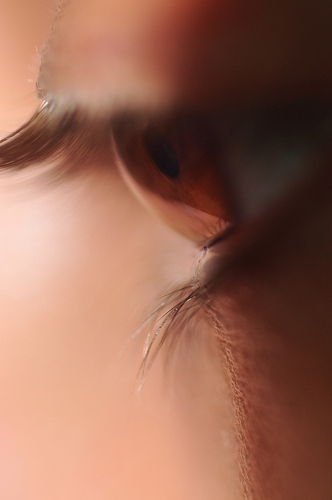Facts about menopause and vision during April’s Women’s Eye Health Month
In many, many ways, men and women are very different―it’s pretty safe to say that there are very few people who would argue with that statement. Everything from our mannerisms, attitudes, opinions and actions can often be traced back to our gender, whether we like it or not. This can be true in a variety of different topics to our relationships to our own health.
 For instance, during the current changing of the seasons, women often report that they suffer from seasonal eye allergies that lead to itchy, watery eyes than men. Although, along the same lines of spring vision problems, men are less focused than women on making sure that a pair of sunglasses offers them UV protection.
For instance, during the current changing of the seasons, women often report that they suffer from seasonal eye allergies that lead to itchy, watery eyes than men. Although, along the same lines of spring vision problems, men are less focused than women on making sure that a pair of sunglasses offers them UV protection.
However, it’s not just our behaviors and personality that bring up the debate of men vs. women. Our bodies, senses and health have their own differences when it comes to comparing the two genders. A great example of differences between the vision of men and women are the many eye changes that women often experience during menopause.
This common event typically occurs in women in midlife, during their late 40s and early 50s typically, and it often signals the end of the fertile phase of a woman’s life. While many common age-related vision problems may first begin to show signs around this age range anyway―this is the age in which many eye doctors will first begin looking out for signs of cataracts, for instance―other vision problems are increased with the onset of menopause.
Dry eyes, for example, is one uncomfortable condition that is common among women who are in their late 40s and early 50s. In fact, more than 60% of women are affected by dry eyes once they enter menopause. Because this vision condition causes grittiness, tearing and a foreign body sensation within the eye, it is no secret as to why it can be so uncomfortable.
However, why exactly is the onset of menopause such a trigger for dry eyes? A woman’s hormones play an important role in her tear production and lubrication levels. Throughout the course of menopause, this increased production of estrogen means less tear production. Therefore, when a woman’s eyes stay try for too long, they can end up becoming red, itchy and swollen.
Luckily, there are many simple solutions of battling the uncomfortable side effects that come with dry eyes. The most common treatment for dry eye is “artificial tears” eye drops which can help to relieve symptoms by restoring fluid to the eye.
It is very important that both men and women alike undergo annual eye examinations once they enter their senior years so they can begin looking out for common aging vision problems such as dry eyes or cataracts. If you would like to schedule an appointment to find out what more you can do to combat your vision problems, contact OCLI today.
Image: Source